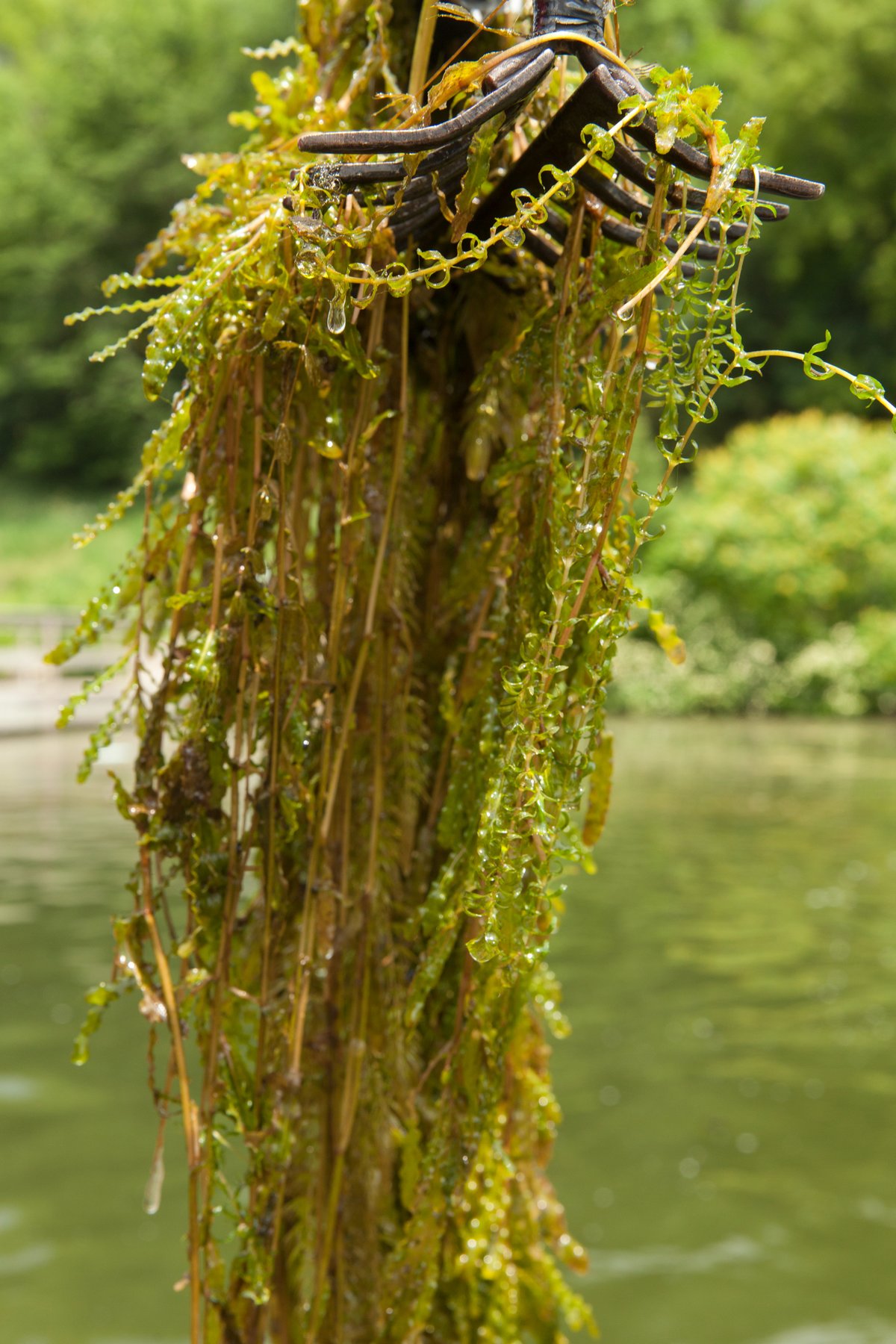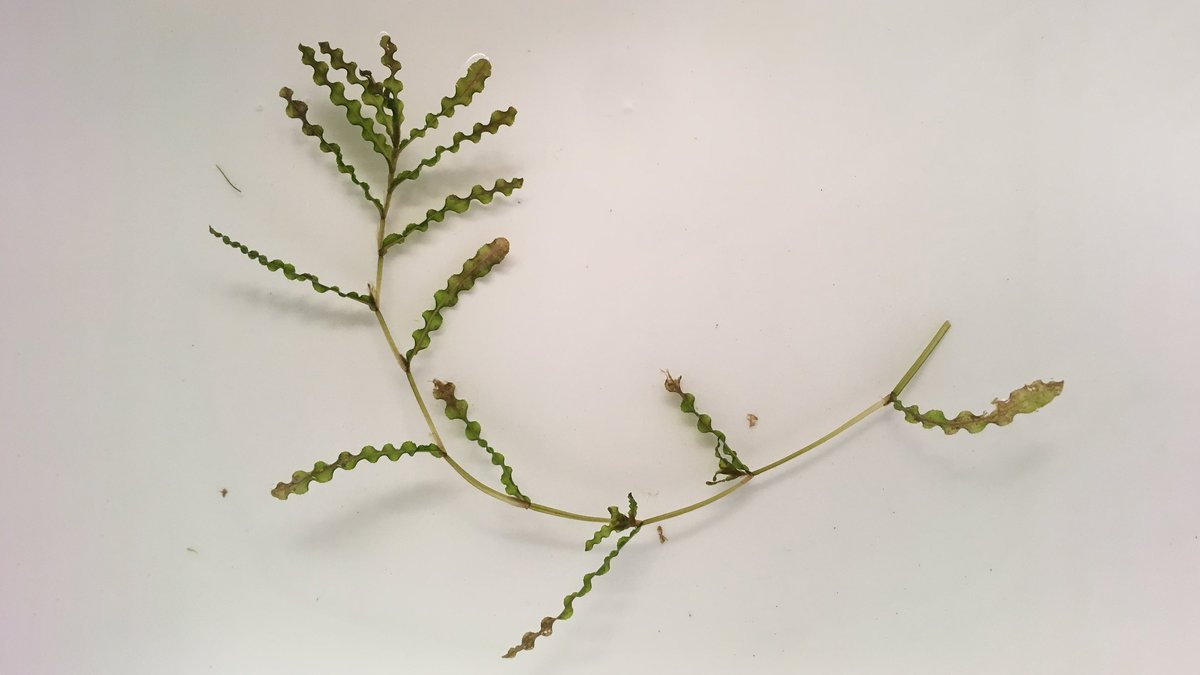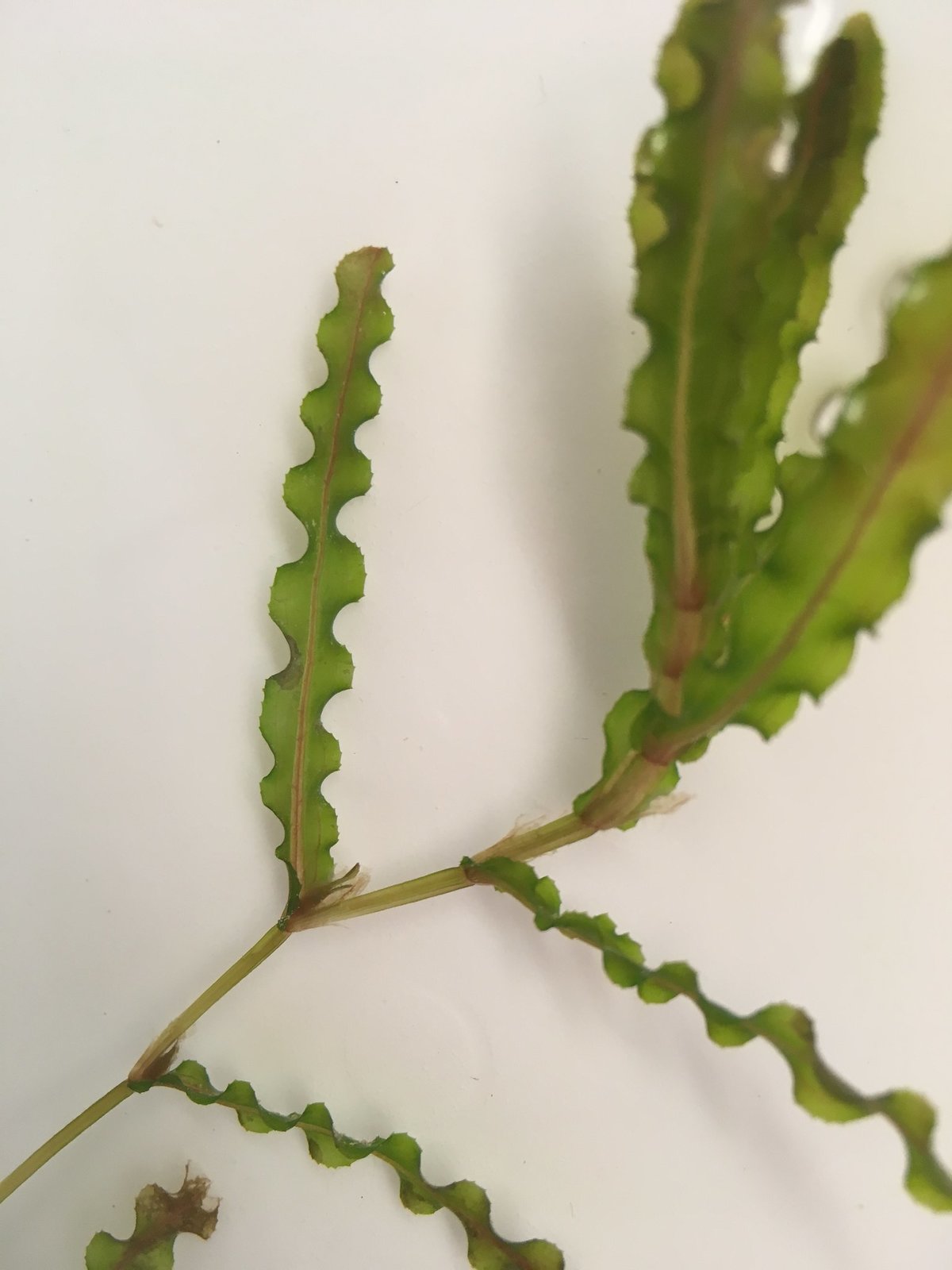Potamogeton crispus
Curlyleaf pondweed inhibits the growth of native species, interferes with recreational activities, and disrupts valuable services provided by native plants such as stabilizing sediment, improving water quality, and providing support for fish and other animals. MAISRC research includes analyzing data to determine factors that control curlyleaf distribution and abundance, establishing how many herbicide treatments are needed for control, and finding approaches to establish native plants after control. More about curlyleaf pondweed.
MAISRC findings
-
Conducted research on Lakes Riley and Susan (with Mitchell Lake as a reference lake) that showed that low-dose, early season endothall herbicide treatments successfully controlled curly-leaf pondweed within treatment years without adverse impacts on native plant communities. Curly-leaf pondweed frequency of occurrence, biomass, and turion production all declined by 90% or more in treated lakes
-
Analyzed pre-existing data on curlyleaf pondweed from sixty Minnesota lakes to understand environmental factors affecting curlyleaf pondweed abundance and management outcomes
-
Found that consecutive years of treatment are important for suppressing curlyleaf pondweed, and that less snow and turbid water are closely tied to more abundant populations of curlyleaf pondweed
Research
Risk assessment, control, and restoration research on aquatic invasive plant species
This project will perform in-lake invader control experiments using a small-scale in-lake experiment to evaluate how native plants respond to invader removal, seed-addition, light availability, and the combination of these factors. It will also analyze monitoring data from hundreds of lake management projects previously conducted in Minnesota over twenty years and develop a publicly available statewide plant monitoring and management database.
Led by Dr. Daniel Larkin
Managing for sustainable native macrophyte communities in lakes of the Riley-Purgatory Bluff Creek Watershed District
Researchers are working to determine the response of native and invasive macrophytes to carp removal in the Riley-Purgatory Bluff Creek Watershed District. They are assessing approaches to promote native plant establishment after carp removal.
Led by Dr. Ray Newman
Developing and evaluating new techniques to selectively control invasive plants
Researchers evaluated over 60 Minnesota lakes for factors affecting curlyleaf abundance. The team assessed the lakes pre and post herbicide treatment, and monitored regrowth over consecutive years.
Led by Dr. Ray Newman
Restoration and maintenance of native macrophytes in lakes – partnership with Riley Purgatory Bluff Creek Watershed
This project studied the use of native plants to control invasives in Lakes Riley, Susan, and Staring. Restoration of native plant communities and their impacts on water clarity were also studied.
Led by Dr. Ray Newman
About curlyleaf pondweed
Description
Curlyleaf pondweed is a non-native, invasive aquatic plant that can grow in very dense stands, displacing native species. One of its advantages is that it produces hardy turions – buds that can remain viable for long periods before sprouting to form new plants. Curlyleaf pondweed can grow in depths up to 15 feet. Curlyleaf pondweed produces a long stem (up to a meter) with small, submerged leaves that have distinct “teeth,” or wavy edges. In the spring, its turions look like small greenish-brown pinecones.
Life cycle
Curlyleaf pondweed is generally the first pondweed to come up in spring, helping distinguish it from other native pondweeds. It dies in the mid-summer, and dead plants may accumulate on shorelines. Its primary means of reproduction is through the production of turions, hundreds of which can be produced by each plant. Turions remain dormant in the sediment through the summer and germinate in the fall. Germination rates can be as high as 80 percent, and turions can remain viable in the sediment for two or more years.
Impacts
Curlyleaf pondweed displaces native plants, disrupting vegetation structure that provides forage and shelter for waterfowl, fish, invertebrates, and algae-consuming zooplankton. It also reduces recreational opportunities for swimmers and boaters by forming thick surface mats.
Distribution
Curlyleaf pondweed occurs in over 750 water bodies in Minnesota, spread throughout 70 out of the state’s 87 counties. It is native to Eurasia, Africa, and Australia, but is now found throughout much of the United States.
How it spreads
Curlyleaf pondweed is spread by humans inadvertently transporting plants and/or fragments among waterbodies. Infestations often occur in high-use lakes.



